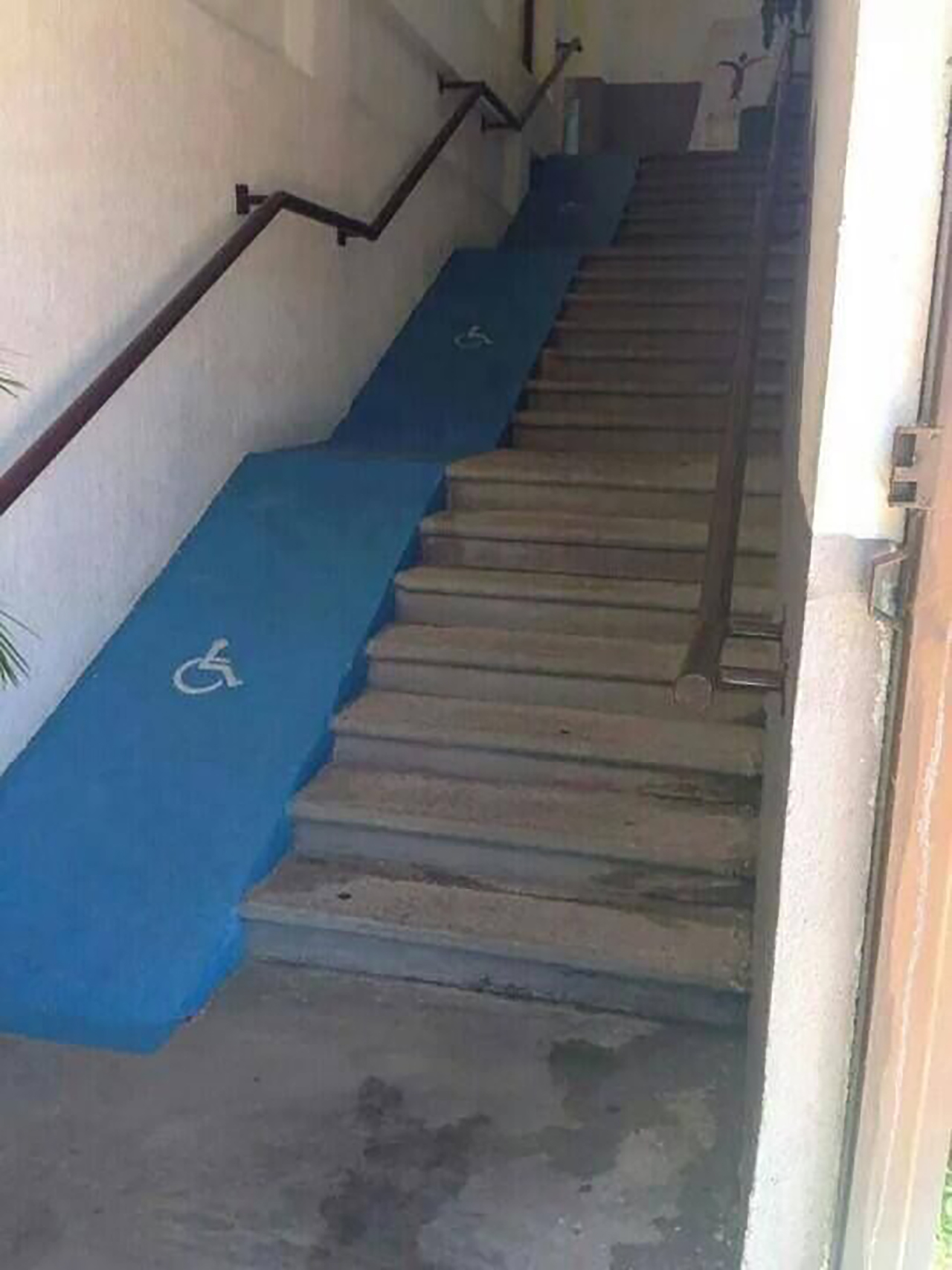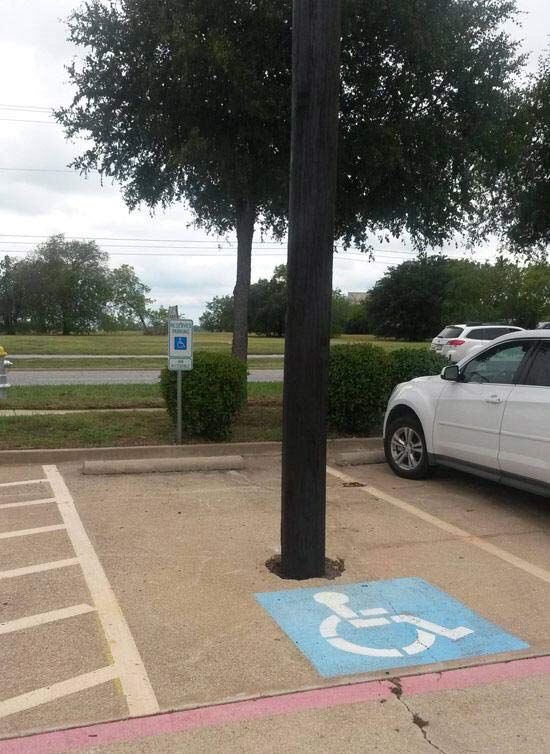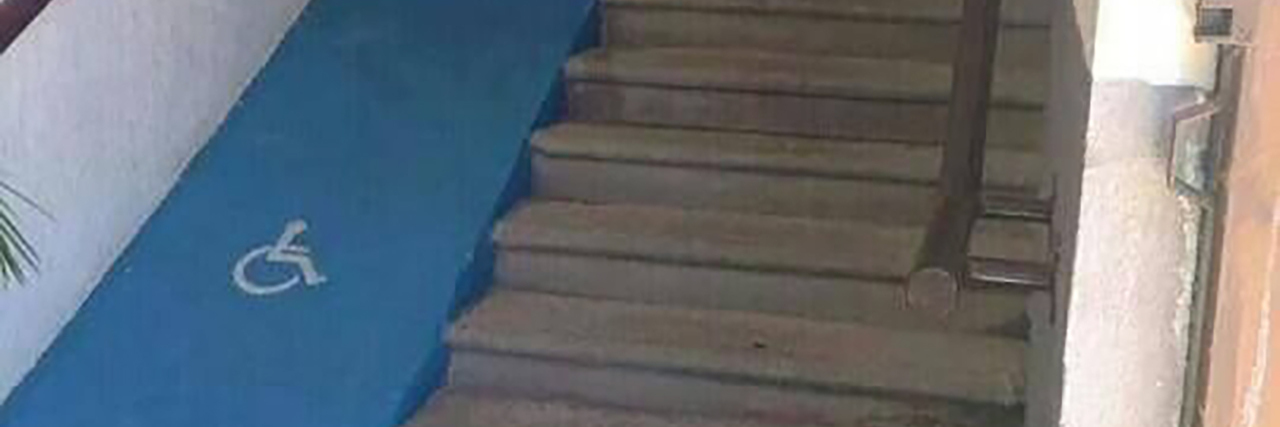Does anyone see a problem with this picture?

We have a problem in society with many people not understanding what it means to be truly accessible. As a wheelchair user, I run into situations such as this regularly. Whether it is an “accessible” toilet stall that doesn’t even fit my wheelchair, lack of appropriate disability parking, or a ramp that is not up to the Americans With Disabilities Act (ADA) standards. Able bodied-people who build accessible areas need to be educated on the ADA, as well as what people with disabilities face on a daily basis.
According to the ADA, “ADA ramp specifications require a 1:12 ramp slope ratio which equals 4.8 degrees slope or one foot of wheelchair ramp for each inch of rise. For instance, a 30 inch rise requires a 30 foot ramp. ADA guidelines require a minimum 5′ x 5′ flat, unobstructed area at the top and bottom of the ramp.” It also specifies that, “ADA ramp guidelines require ADA ramp handrails that are between 34″ and 38” in height on both sides of the wheelchair ramps.”The above shown ramp does not meet any of the ADA requirements. I would like to say that situations such as this are uncommon, but in reality, these situations occur far too often. For example, I have a wheelchair lift on my van. There are many places I patronize that have either no accessible parking available, or they have spaces that are too small for me to effectively use my lift without hitting another vehicle parked next to me. This can become extremely frustrating when I am trying to get to an appointment on time, but I am late because I’m stuck in the parking lot. The ADA has outlined the regulations for number of accessible parking spaces. You can read more about accessible parking regulations here.
There are so many examples of inaccessibility in America (and throughout the world) that I could never cover them all in one post. This is a serious problem that needs to be addressed. People need to understand that simply placing a disability accessible sign somewhere does not automatically make it accessible. As a person with a disability, it seems the general public do not feel that disabilities are all that common. They don’t seem to understand the importance of following ADA regulations, or even of common courtesy.

I don’t know how many times I’ve tried to find a parking space and an able-bodied individual with no disabled parking placard or plate is parked in the accessible spot. When confronted about the situation, I am usually given the excuse, “I was only in there for a minute.” People need to remember that those spaces are not there for their convenience, but for the necessity of people like me — even if it’s only for a minute.
So how do we remedy this situation? It will be difficult. It requires education; education for the engineers designing these places, education for the owners of public places, and education for the general public. People with disabilities need to speak up when we notice ADA violations. We need to speak up and educate our fellow citizens when they fail to see the importance of maintaining accessibility. We need to push for harsher punishments for neglecting to follow the ADA. Without speaking out and educating others about our needs, we will continue to be faced with inadequate accessibility wherever we go.
We want to hear your story. Become a Mighty contributor here.
Photos by contributor.

